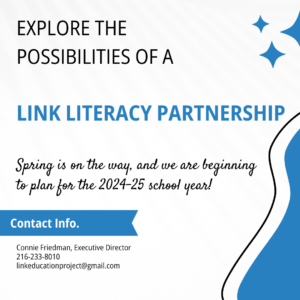For whatever reason, we in education like to create problems where none need to exist. We debated phonics vs. whole language, student-centered learning vs. teacher-directed instruction, and now it’s complex text vs. just right books. In all of these cases, the answer is balance, not one or the other. But exploring these arguments can serve to deepen our understanding of the issues and practices.
After a review of the current research and after years of working with teachers and students, we have come up with the guidelines below. We believe that teachers, as professionals, know how to use their expert knowledge and common sense. In reading, the expertise is around understanding the learning process and the complexities of learning to read. The common sense is about realizing when to draw on which tools for particular purposes or student needs, and when to seek out more knowledge.
Guidelines for Text Selection:
1. Students need regular exposure to all levels of text (easy, instructional, hard) across the whole day and in all content areas. Guided reading is only one of many daily instructional contexts.
2. There are many factors to consider when choosing texts for guided reading. The level serves as an important guideline, but other things to consider are your goals for the students, content, interests, and background knowledge.
3. Recognize that there are times when it is appropriate to use challenging texts in guided reading (for example, to support content learning, to prepare for high stakes testing, to provide high levels of support for complex text).
4. Despite some research evidence that kids can learn to read with high levels of support and challenging texts, we can’t ignore the 70 years of research that tell us that students become better readers when they have daily opportunities to read with high levels of accuracy and comprehension. Support student learning by providing them with this opportunity.
5. Balanced literacy is about balancing the level of support teachers provide to students with the level of text complexity. We have, in a balanced literacy framework, the contexts for providing this support to all students (independent reading, guided reading, shared reading, read alouds).
_____________________
References:
Calkins, L. & Ehrenworth, M. (2016). Growing extraordinary writers: Leadership decisions to raise the level of writing across a school and a district. The Reading Teacher, 70(1), 7-18.
Fountas, I.C. (2014, Jul.). The critical role of text complexity in teaching children to read. Retrieved from http://www.heinemann.com/fountasandpinnell/supportingMaterials/ fountasAndPinnellTextComplexityWhitePaper.pdf.
Heitin, L. (2016, Jul. 6). Should teachers still be using just right’ books? [Web log post]. Retrieved from http://blogs.edweek.org/edweek/curriculum/2016/07/should_ teachers_ still_be_using_just_right_books.html.
Porter-Magee, K. (2013, Feb. 8). Common core v. the false promise of leveled literacy programs. [Web log post]. Retrieved from https://edexcellence.net/commentary/education-gadfly-daily/common-core-watch/2013/common-core-v-the-false-promise-of-leveled-literacy-programs.html.
Shanahan, T. (2016, Jun. 27). Further explanation of teaching students with challenging text. [Web log post]. Retrieved from http://www.readingrockets.org/blogs/shanahan-literacy/further-explanation-teaching-students-challenging-text.
Shanahan, T. (2016, Jul. 5). The slow path forward: We can-and do-learn from reading research. [Web log post]. Retrieved from http://www.readingrockets.org/blogs/shanahan-literacy/slow-path-forward-we-can-and-do-learn-reading-research.






